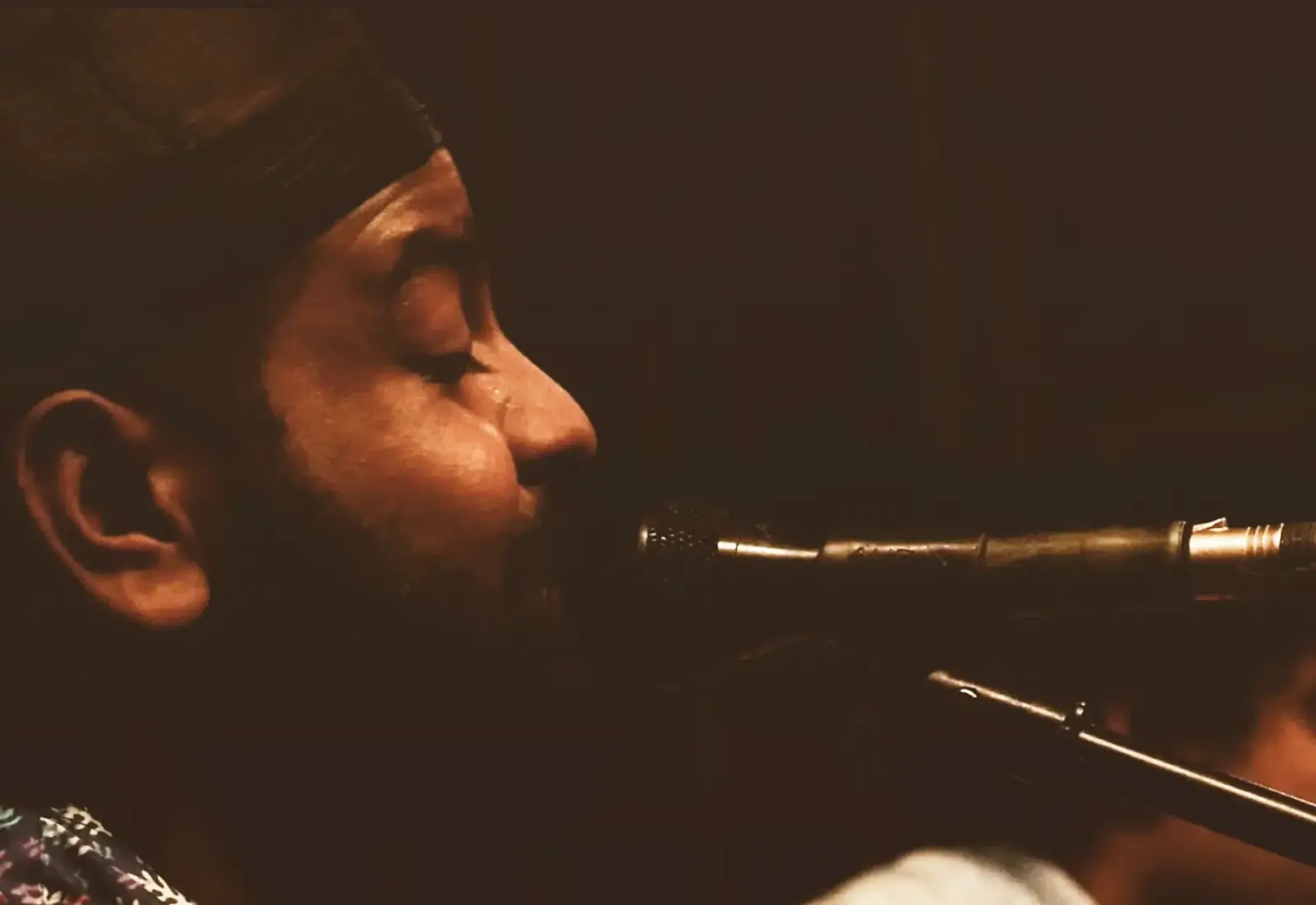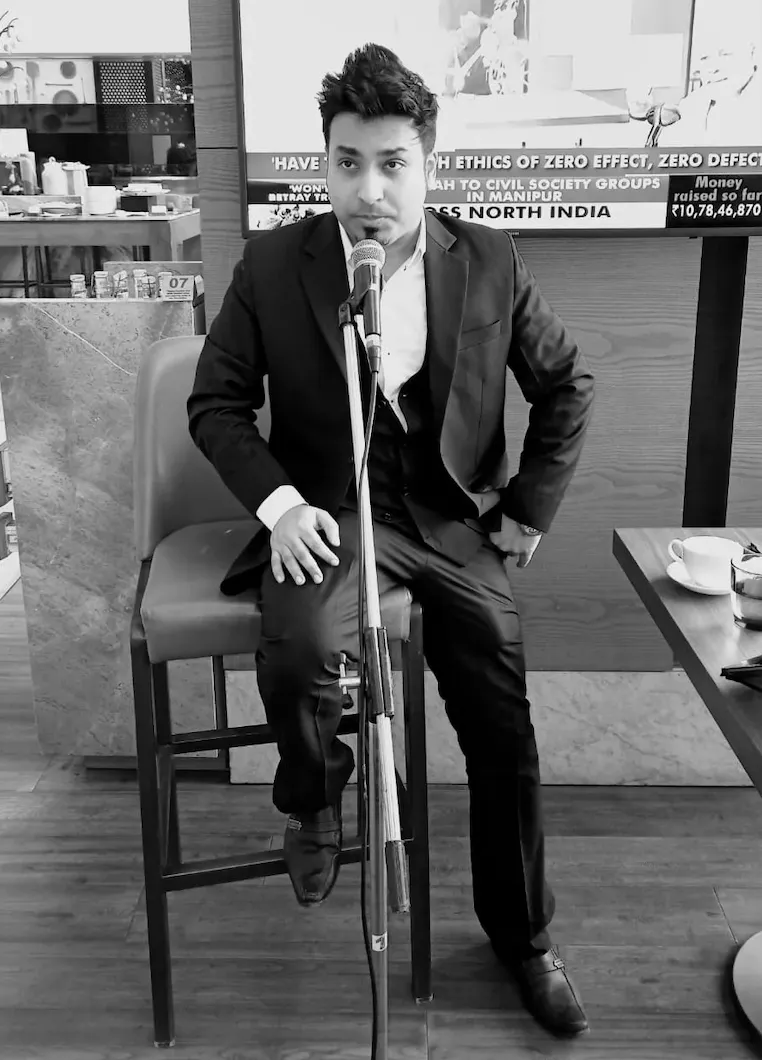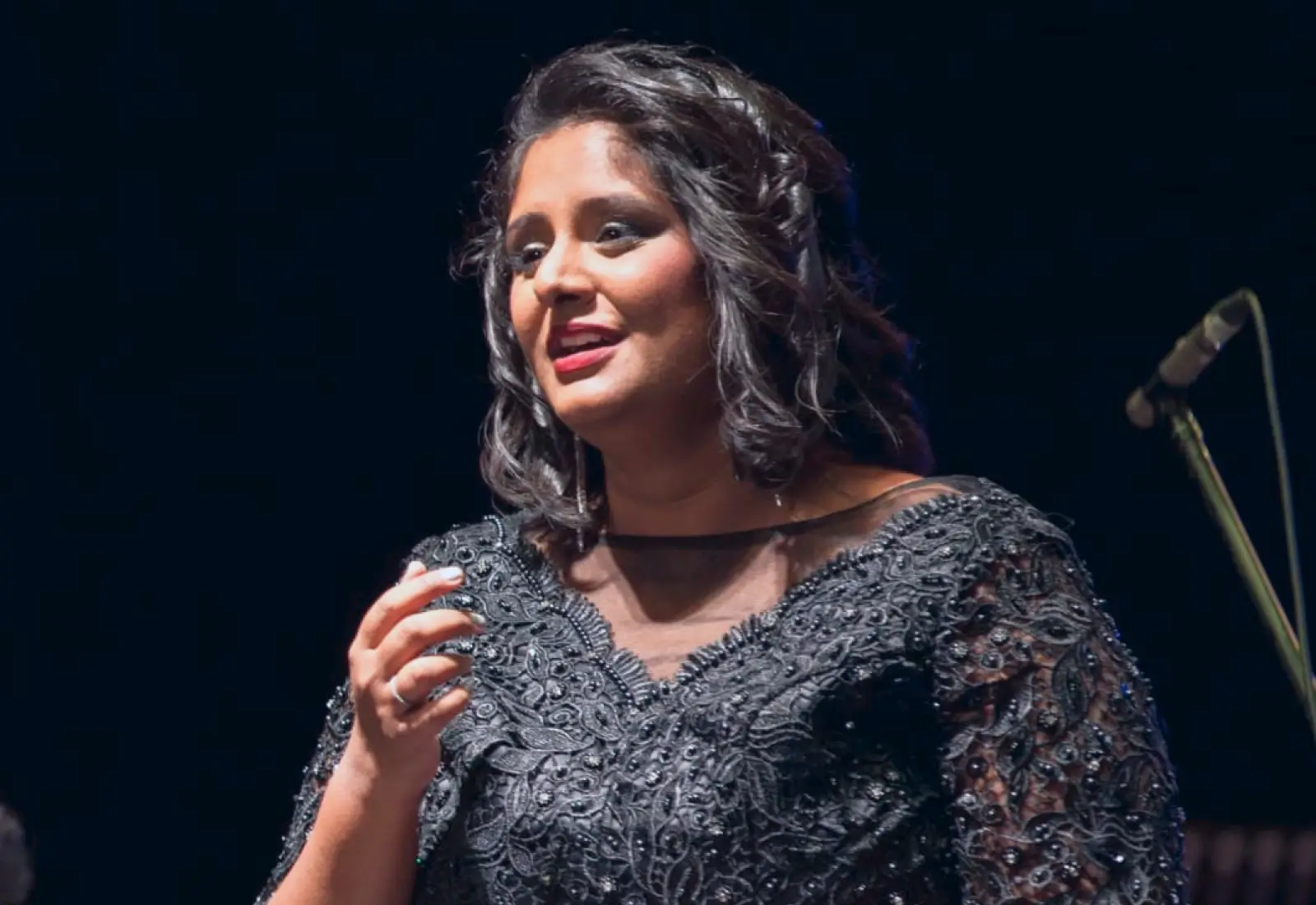10 Singing Vocal Techniques for Singers Must Know
Singing vocal techniques are vital aspects that every vocalist should learn. Expression, apart from the musical notes, rhythm, and tempo, largely influences the structure and identity of a musical composition. Numerous vocal techniques express different emotions while maintaining the melodic and rhythmic flow of the song.
In this blog, we will learn about the different vocal techniques used in Western singing.
List of 10 Different Singing Vocal Techniques and Styles
1. Vibrato
2. Vocal Runs
3. Riff
4. Vocal Distortion
5. Legato
6. Belting
7. Voice Dynamics
8. Falsetto
9. Scatting
10. Yodeling
1. Vibrato
Vibrato is the oscillation of pitch above and below that gives a pulsating impact to a standing note when it is stretched for a long time.
Have you heard Whitney Houston’s - “I will always love you’? The singer used vibrato while singing ‘I’ and ‘You’ Just observe how her voice quivers as she sustains over a single note for a long time. It adds a touch of warmth, expressiveness, and richness to the singing style.
The rolling out of this vocal technique sounds natural, but it is entirely controlled by the singer. It is the singer who decides how long to sustain it as a standing note when to introduce vibrato, at what rate and depth to sing the vibrato, how long to carry on with it, and finally, when to return to the standing note.
The choice of when and how to use vibrato is often influenced by the musical style and the emotional content of the song. Vibrato portrays the singer’s emotional engagement with the song at the time of the performance. It can be a natural flow of voice or deliberately done by the singer to get the desired effect.
2. Vocal Runs
Vocal runs showcase a singer's technical proficiency and artistic flair, contributing to the overall style and uniqueness of their vocal delivery. When executed skillfully, runs can captivate listeners and elevate a vocal performance to a higher level of artistry.
The term "vocal run" is derived from the idea of a continuous, rapid sequence of musical notes that "runs" smoothly along a scale or a melodic pattern. This vocal technique is characterized by their agility, speed, and the ability to seamlessly transition between different notes. It accentuates the vocal projection and expressiveness of the singer's performance.
Skillfully executed vocal runs establish the technical expertise and musicality of the singer.
The term has become widely recognized and used in various musical genres, particularly in R&B, gospel, pop, and jazz, where vocal runs are frequently employed to embellish melodies and convey emotion.
Singers who excel in executing intricate vocal runs are often admired for their skill and versatility in navigating the complexities of these melodic embellishments.
3. Riff
Remember the magical part in Beyonce’s ‘Countdown’ riff at the beginning of the song? Observe how her voice glides up and down smoothly capturing the listener’s attention at the very onset of the song.
Or, when Whitney Houston in the song ‘I Have Nothing’, goes - “I have nothing, nothing, nothing, If I don’t have you."
This vocal technique is known as Riff.
The riff is characterized by melodic embellishment, structured or impromptu creative improvisation by the artist, expressiveness, agility, and precision.
The riffing technique is often blended with other vocal techniques, such as vibrato, dynamics, and runs to give a well-rounded and versatile vocal delivery.
4. Voice Dynamics
Voice dynamics refer to the variation in loudness and intensity in a singer's performance. Skillful use of dynamics adds depth, emotion, and expressiveness to a song.
The different levels of volume in music include - Fortissimo (ff), Forte (f), Mezzo-forte (mf), Mezzo-piano (mp), Piano (p), and Pianissimo (pp): These are terms used to describe different levels of volume in music. Singers can modulate their voice to sing loudly (fortissimo, forte) or softly (pianissimo, piano), and anywhere in between (mezzo-forte, mezzo-piano).
A crescendo involves gradually increasing the volume, while a decrescendo involves gradually decreasing it. These techniques can be applied to individual phrases or sections of a song, creating a sense of anticipation, tension, or release.
One of the best examples of voice dynamics can be observed in Someone Like You by Adele. The song starts quietly, allowing Adele to convey vulnerability, but as it progresses, the dynamics increase during the powerful chorus, adding intensity to her delivery.
Another example is - Billie Jean by Michael Jackson. He uses softer, breathier vocals in the verses, creating a mysterious atmosphere, while the choruses feature dynamic shifts with more assertive and powerful singing.
5. Legato
Legato is a vocal technique that involves singing smoothly and seamlessly, creating a connected and flowing musical line. The term "legato" comes from the Italian word for "tied together," and in vocal performance, it refers to the art of singing without noticeable interruptions between successive notes.
Legato is often employed to enhance phrasing in music. Singers use this technique to convey longer, more lyrical lines, contributing to the overall musical expression and interpretation of a piece.
Though legato singing is a vocal technique that is employed in most songs, yet, some popular songs might help to get a better understanding.
Elvis Presley's ballad - Can't Help Falling in Love - includes instances of legato singing, particularly in the melodic and romantic phrases that characterize the song.
The Prayer" by Celine Dion and Andrea Bocelli features legato singing during the heartfelt and soaring vocal passages, creating a seamless blend of their voices.
6. Belting
Belting is a vocal technique characterized by powerful, intense singing in the higher part of the chest voice range. It involves pushing the chest voice to its limits, often resulting in a resonant, forceful sound.
Belting is commonly used in various music genres, especially in pop, rock, and musical theater, to convey strong emotions and create impactful moments in a song.
Belting requires strong breath support, control, and the ability to navigate the higher chest voice range without strain.
One example that highlights the impact of belting is Halo by Beyonce. Observe how she belts out the emotionally charged chorus with a mix of power and control, creating a memorable and impactful moment.
Celine Dion is known for her powerful voice. In the song - It's All Coming Back to Me Now, she utilizes belting to convey the passion and emotion of the lyrics, particularly in the soaring and intense moments of the chorus.
7. Vocal Distortions in Singing
Remember Elvis Presley’s Hound Dog or just throwing his voice to screech ‘Broken Heart’ in Heartbreak Hotel? Elvis's rendition of "Heartbreak Hotel" features a bluesy vocal approach. The intentional introduction of vocal grit renders a raw, raspy quality, giving the voice a more visceral and authentic feel.
It is amazing how he constantly transitions from crooning to growling to an intense low larynx intermittently. The king of Rock n Roll executes vocal distortions to add and control the intensity of emotions as and when required in his performance.
Vocal distortions help in creating a raw, gritty, or edgy quality. This technique is often used in various music genres, particularly in rock, heavy metal, and certain styles of contemporary music, to add intensity, power, and a unique character to a singer's performance. Fry screaming, growling, grunting, and false chord distortions are some of the common vocal distortion techniques.
8. Falsetto
Remember Sam Smith’s song - Stay With Me. Observe it when the chorus sings ‘Stay with Me’. The vocal technique used here is falsetto. It adds a vulnerable and emotive quality to the song. The falsetto notes create a sense of intimacy and heighten the emotional impact of the lyrics.
Falsetto is a vocal technique where a singer produces notes in a higher register than their normal vocal range by allowing the vocal folds to vibrate only partially. This results in a lighter, breathier, and more flute-like quality. Falsetto is commonly used for expressive purposes, especially in the higher range.
9. Scatting
Scatting is a vocal improvisation with wordless syllables, nonsensical words, or improvised lyrics. It's often used in jazz and other genres, allowing singers to create spontaneous and intricate melodic lines. Scat singing involves using the voice as a musical instrument, emphasizing rhythm, phrasing, and creativity.
Have you heard Ella Fitzgerald’s Take the ‘A’ Train? How she starts the song with non-sensible syllables. She continues the same intermittently throughout the song. This adds to the rhythm of the song and is a great fun element too in the song. The predominant sound apart from her voice in this song is the saxophone. And as Ella Scat sings, she almost emulates the sounds of the saxophone verbally.
Another very strong example of Scat singing can be observed in Joni Mitchell’s song - Twisted. Joni, best known for her folk and rock contributions, experimented with jazz influences in "Twisted." The song features Joni's scatting, highlighting her ability to explore different types of vocal techniques.
Also, you could find Scat singing in On the Sunny Side of the Street, by Louis Armstrong where the scatting adds a playful and joyful element to the song.
10. Yodeling
Yodo le i o, le i e, le i i…Perhaps a little old school, but one that forms parts of some of the most memorable songs.
Remember Jessie - the Yodeling Cowgirl? The compelling impact of the Yodel-Adle-Eedle-Idle-Oo - lingers in the mind even after the song has ended. Voiced by Joan Cusak is one of the best examples of yodeling.
Another example is Blue Yodel No. 1 (T for Texas)" by Jimmie Rodgers. Often considered the "Father of Country Music," Jimmie Rodgers popularized yodeling in country music. In "Blue Yodel No. 1," Rodgers adds yodeling into the lyrics, creating a signature sound for his style of country music.
Yodeling is a vocal technique characterized by rapid and repeated changes in pitch between the chest register and the head register. It is often associated with mountainous regions and folk music traditions, and it involves a distinctive alternation between a lower chest voice or chest register and a higher falsetto or head voice. Yodeling has been used in various musical genres, including country, folk, and even in certain popular songs.
Do You Want to Master These Different Vocal Techniques for Singing?
One of the most amazing and versatile musical instruments with almost infinite possibilities is the human vocal chord. Any melodic composition finds varied expression in the human voice because every voice is unique. The vocal techniques that we just discussed above further accentuate the expressiveness.
The vocal techniques help to bring out the same emotion in varied colors and degrees of intensity.
The vulnerability when Whitney Houston riffs “I have nothing, nothing, nothing If I don’t have you " is certainly different from the vocal distortions employed by Elvis Presley in ‘Heartbreak Hotel’.
Yet again Scat singing and Yodeling - both invoke happy hormones. But each in its unique way.
Also, there are specific vocal techniques for specific singing styles such as Rock, Pop, Jazz, Blues, and Folk among others.
Vocal techniques are the secret ingredient to becoming a well-rounded and versatile singer. Vocal training, including exercises focused on pitch control, breath support, and practicing different patterns and phrases made out of notes, is crucial for developing these well-executed vocal techniques and styles. When mastered and used judiciously, these techniques can elevate a singer's artistry and contribute to a more nuanced and captivating rendition of a song.
So how to master them?
There are dedicated practice regimes for mastering each of these techniques that only an expert mentor can guide you through. If you want to master these vocal techniques, explore Western music lessons online.














